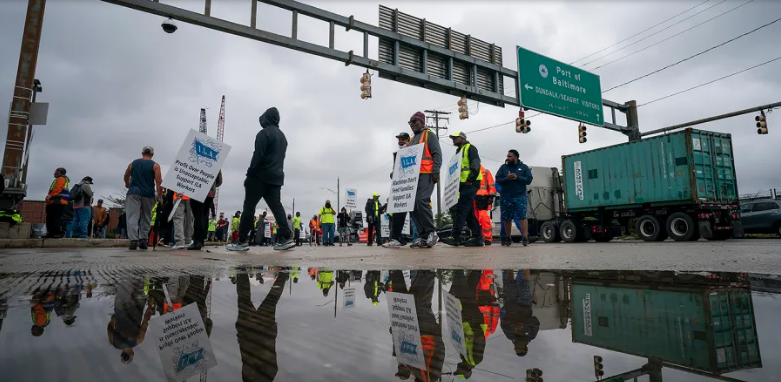The United States East Coast (USEC) port strike has taken a significant turn, with a tentative agreement between the International Longshoremen’s Association (ILA) and the United States Maritime Alliance, Ltd. (USMX) regarding wage-related matters. This development marks a temporary resolution in a dispute that has disrupted operations across key East Coast ports. However, the resolution is far from comprehensive, and businesses relying on these ports should brace for ongoing uncertainties in the months ahead.
A Temporary Respite: What the Agreement Entails
The ILA and USMX have announced a tentative agreement concerning wage increases and decided to extend the current Master Contract until January 15, 2025. This extension provides time for further negotiations as both parties return to the bargaining table to address a range of unresolved issues beyond wages, including working conditions, staffing levels, and benefits.
While this agreement offers a temporary respite from the strike, allowing port operations to continue without immediate disruption, the extension only lasts until mid-January 2025. This means the risk of further disruptions remains high as the broader terms of the contract are still under discussion.
Why This Matters to Supply Chain Managers
The temporary agreement may prevent immediate disruptions, but the ongoing negotiations suggest that uncertainties in the supply chain could persist well into the new year. The possibility of a renewed strike or operational slowdowns in early 2025 looms if negotiations fail to resolve the remaining issues.
Key Takeaway: Companies that depend on USEC ports for the import and export of goods should consider strategic actions to mitigate potential disruptions:
- Inventory Planning: Businesses are advised to build additional inventory throughout October, November, and December 2024 to safeguard against possible delays or disruptions in early 2025. This extra stock can help buffer against supply chain hiccups if negotiations stall or fail.
- Diversifying Supply Routes: Where feasible, consider alternative routes and transportation modes. This could mean shifting some shipments to ports outside the potential strike zone or opting for air freight for time-sensitive goods.
- Staying Informed: Close monitoring of the negotiations between the ILA and USMX is crucial. As the situation evolves, staying updated can help businesses adjust their logistics strategies as needed, reducing the risk of unforeseen delays.
The Broader Impact on the Economy
USEC ports are a critical artery for global trade, serving as key entry points for goods ranging from consumer products to raw materials. Disruptions at these ports can have widespread ripple effects across supply chains, impacting delivery timelines and increasing costs. For industries like ours—the secondhand industry—where just-in-time inventory systems are vital, delays could lead to lost sales and strained relationships with customers.
While the tentative agreement is a positive development, it doesn’t fully alleviate concerns for businesses with critical shipments scheduled for the first quarter of 2025. The entire logistics ecosystem—trucking, rail, and warehousing—remains on high alert, with the risk of renewed disruption until a final resolution is reached.
What’s Next in the Negotiation Process?
When the ILA and USMX return to the negotiating table in January, discussions will broaden to include other business issues, such as staffing levels, automation, benefits, and working conditions. Historically, these have been contentious topics between labor unions and port operators, and they could prove challenging to resolve.
The outcome of these negotiations could shape the labor landscape of USEC ports for years to come, potentially influencing operational costs, service levels, and the competitive positioning of these ports relative to others in the U.S., such as those on the West Coast. The stakes are high, and while both sides have managed to avoid immediate disruption, the path to a comprehensive and long-term solution is still uncertain.
Preparing for January 2025: A Final Word
The tentative agreement provides businesses with some breathing room, but complacency is not an option. The risk of disruptions is not entirely eliminated, and proactive measures will be critical in the coming months. Building up inventory and diversifying shipping routes are just a few strategies that could help mitigate potential challenges as January 2025 approaches.
At Bank & Vogue, we understand the complexities of managing supply chains during periods of uncertainty, especially when it comes to navigating the logistics of secondhand goods. If you need assistance with inventory planning or logistics strategies to prepare for the potential impacts of the USEC port negotiations, feel free to reach out to us. We are here to ensure your business remains equipped to handle whatever challenges lie ahead.
In an uncertain logistics environment, the best approach is to plan for all possibilities while hoping for a smooth resolution. As the ILA and USMX work toward a comprehensive deal, businesses must stay agile, adapt to changing circumstances, and ensure they are ready for whatever comes next in this evolving situation.









